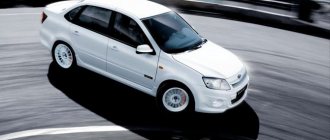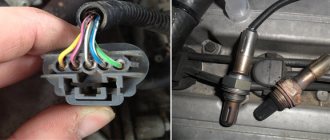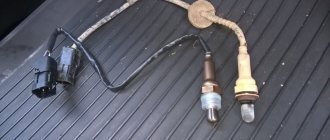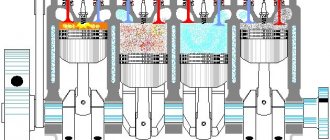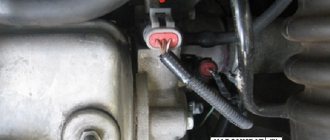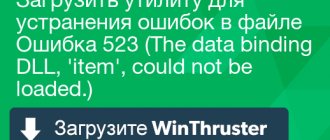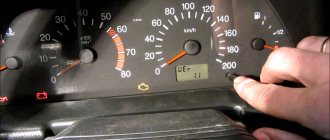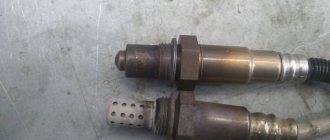Code P0131 - Oxygen Sensor (Bank 1, Sensor 1) Circuit Low Voltage. Front O2 Sensor Circuit Low Voltage (Bank 1 Sensor 1).
The front oxygen sensor (Sensor 1) measures the amount of oxygen in the exhaust before the catalytic converter. The engine control unit (ECU) supplies a reference voltage to the oxygen sensor (OS). The sensor sends a signal voltage back to the ECU.
Low voltage means a lean air-fuel mixture—too much oxygen and too little fuel. High voltage means rich air/fuel mixture.
Code P0131 is set when the signal voltage from the front O2 sensor remains low. Modern cars use an air-fuel ratio sensor (A/F sensor) instead of an AC sensor, but it is also often called a front oxygen sensor. Bank 1 is the bank containing cylinder number 1. In a 4-cylinder engine, there is only bank 1.
Read more: What is bank 1, bank 2, sensor 1, sensor 2?
What does P0131 mean?
Trouble code P0131 indicates a problem with the oxygen sensor 1 (bank 1), also called the air fuel ratio sensor or heated oxygen sensor. This error indicates that the engine control module (ECM) has detected too low or incorrect voltage in the oxygen sensor circuit or an incorrect air-fuel ratio.
“Bank 1” refers to the left side of the engine, and “sensor 1” means that said sensor is located in the exhaust pipe before the catalytic converter.
Error codes VAZ 2112 8 and 16 valves on the instrument panel: decoding
In modern Lada models, a Euro shield is installed. There is an enlarged display here, where the main and secondary fault codes are displayed. On models 8 and 16 cells, the BC failure codes during self-diagnosis are identical, and the procedure for decoding them requires instructions. There are 9 direct ciphers in total. Codes can stack if there are two or more problems at the same time. If the tidy shows 21, this may mean there are problems No. 6, 7 and 8 at the same time.
If we talk about computer diagnostics, fault codes are deciphered according to a standard scheme that is relevant for all OBD2 variants.
Error 1 1
Says that a critical failure has been detected in the microprocessor system. Open the ECU module and perform a thorough diagnosis using special equipment. Simply cleaning or replacing damaged terminals often helps.
Error 2 on VAZ 2112
The actual on-board voltage differs from the set voltage. The problem may be a short circuit in the main wiring line or a critical discharge of the battery. Study the wiring and basic power components of the car.
Error 3
The fuel level sensor is damaged or not working properly. Check the condition of the float. The cause is a breakdown of the control wiring.
VAZ 2112: error 4
The code indicates that the DTOZH is out of order or is not functioning correctly. The problem should be resolved in the same way.
Error 5
The outdoor thermometer has failed. Check the sensor and its wiring.
Error 6
The code indicates overheating of the power plant. You need to stop immediately and wait for the engine to cool down.
Error 8 2112: 8 valves
Brake system malfunction. Troubleshooting begins with checking the brake fluid level and pad wear.
Error 9
The battery has gone into a deep discharge. Replace the module with a new one or charge the worn element.
Error 10: decryption
In the most common case, the code is a combination of problems 6 and 4. We are talking about a failure of the DTO and overheating of the motor. Problems should be resolved in parallel.
Error 12
Indicates a problem in the electrical circuit of the indicator on the device. Check the appropriate fuse and bulb.
Error 14
Increased signal from the DTOZh controller. There is a short circuit in the controller circuit.
2112 displays fault 18
It is a combination of errors 2, 9 and 7. Problems are resolved in the same way as individually.
Lada 2112 shows breakdown 26
A software glitch that combines three or more problems at the same time. To troubleshoot the problem, perform detailed network diagnostics.
Error 45
Similar solution to problems as in the above paragraph.
Error 34
Mass air flow sensor – low output signal level. The circuit may be damaged or the sensor may be faulty.
Code 78
A simple combination that the machine can use to represent problems 7 and 8 at the same time.
Error 89
Similar meaning and principle of education.
Error 210
Communication with the immobilizer is lost. Perform diagnostics of the wiring and contact groups of the module.
Malfunction P0102
A controller error indicates a low signal from the mass air flow sensor. There is an open circuit or the sensitive area of the sensor is dirty.
P0123 - breakdown
Short circuit on TPS. The circuit is producing too high a signal. There is a short circuit in the circuit. Check the line carefully for damage.
P0131 - error
Lambda probe No. 1 – line damage.
Error 132
Same for DK2.
Breakdown 0134
DK1 wires are broken. Code P0134 indicates a complete loss of communication with the sensor.
Error P0171
The malfunction can be displayed as the number 171. The coding indicates the problem of the fuel mixture being too lean. Check the line for cracks, leaks and damage - air is being sucked into the system.
Lada 2112: error 0172
A similar problem P0172 indicates the opposite effect. Here the fuel mixture is too rich. At 172, you need to check the air filter and mass air flow sensor for functionality.
Error P0300
When code 0300 lights up on the diagnostic scanner, check the ignition system. The error indicates multiple misfires in the cylinders.
P0301 - breakdown
A similar problem with more precise location indication. A misfire was detected in the first cylinder. The repair sequence is identical to point 0300.
Code 0328
Excessively high signal level from the knock sensor. The reason was the filling of low-quality fuel or a physical malfunction in the ignition unit.
Code 0325
There are problems with the knock sensor. Inspect the sensor for damage and replace it with a new device if necessary.
0335 - error
Displayed as 335. There is a problem with the DPKV wiring. The lines are examined for oxides or mechanical damage.
Fault 0340
Likewise for DPRV. For code P0340, the repair steps are identical.
Code 0343
Phase sensor – excessively high signal.
0443 - code
The canister purge valve is faulty, check the unit for damage or mechanical failure.
Error 0505
Short circuit on the speed sensor. Check the entire line.
Fault 0507
Idle speed too high. Check the mixture formation and mixture supply control module.
Code 456
The evaporative emission control module is not functioning properly. Check systems for damage.
Error 603
The ECM is damaged or there is a software glitch. Take the car to an electronics technician. Self-repair will not be effective.
P1135 - error
Incorrect mixture formation in partial load mode. Run system diagnostics.
Error 1426
Code P0426 indicates a problem in the wiring of the canister purge valve.
Error P1513
The idle speed regulator is damaged - a break with a short to ground. The wires need to be insulated or replaced.
1514 - malfunction
The idle speed control is damaged or there is a short circuit.
Error 1602: 2112 16 valves
Indicates that the powertrain control controller is losing voltage. The car does not start well when cold and crashes while driving.
Error 3456
The system requires checking the fuel level sensor. The module is damaged or its wiring is broken.
RAM error 2112
Indicates that there is a problem with the external thermometer. The sensor cannot be repaired; it must be replaced with a known good one.
KB 2112 sensor synchronization error
Indicates that there is damage in the sensor line or a malfunction of the sensor. The wiring and element are fully checked.
Error: lean mixture
If this code lights up on the dashboard, the control unit has nothing to do with it. If the mixture is lean, perform diagnostics on the fuel lines. The trouble is caused by air leaks at the joints or pipes.
Error: Mixture too rich
A similar problem caused by an air line obstruction. Here the filter may become clogged, the mass air flow sensor may break, or air may be sucked into the system after the sensor.
Phase sensor error
Check the sensor for problems. Repair consists of replacing the entire module.
Knock sensor error
The cause of the breakdown and the corrective actions are completely similar to the point indicated above.
Oxygen sensor malfunction
The controller may fail due to filling with low-grade fuel or problems with the mixture formation system.
Camshaft sensor malfunction
The DPRV may malfunction after passing a puddle or too active washing. To fix the problem, just dry the device well.
Crankshaft sensor malfunction
Worn gear on the working part of the sensor. The sensor can only be replaced entirely with a fully functional one.
Speed sensor malfunction
The DS on a car is reliable, but a problem can happen after driving along a broken road or crossing a ford - the sensor simply floods with water. If the diagnostics determines that there is a problem, the entire sensor must be replaced.
ECU malfunction
The module is diagnosed using special equipment. Experienced electronics engineers can resolder or repair the part, but in most cases, the unit is simply replaced with a new one.
What are the symptoms of P0131?
When a P0131 , the Check Engine light will illuminate on your vehicle's dashboard. The vehicle's ECM will put the engine into limp mode and set the air-fuel mixture ratio according to preset parameters. The engine will run on a leaner fuel mixture to prevent damage to the catalytic converter. This may lead to increased fuel consumption.
Failure of the oxygen sensor will lead to a drop in power and unstable engine operation. In the worst case scenario, the car's engine will stall and will not start again.
location of oxygen sensor bank1 sensor1 grant, viburnum 2
The UDC is installed on the receiving pipe (Fig. 1.1-06). Its sensitive element is located in the exhaust gas flow. The UDC generates a voltage varying in the range of 50...900 mV. This output voltage depends on the presence or absence of oxygen in the exhaust gases and on the temperature of the UDC sensing element. When the UDC is in a cold state, there is no output signal from the sensor, since in this state its internal electrical resistance is very high - several megohms. As the sensor warms up, the resistance drops and the ability to generate an output signal becomes possible. To operate effectively, the UDC must have a temperature of at least 300°C. For quick warm-up after starting the engine, the UDC is equipped with an internal electric heating element, which is controlled by a controller. The duty cycle of heater control pulse signals (the ratio of the duration of the on state to the pulse repetition period) depends on the temperature of the UDC and the operating mode of the engine.
If the sensor temperature is above 300°C, then at the moment of passing through the stoichiometry point, the sensor output signal switches between low level (50...200 mV) and high level (700...900 mV). A low signal level corresponds to a lean mixture (presence of oxygen), a high signal level corresponds to a rich mixture (no oxygen).
How does a mechanic diagnose a P0131 code?
To properly diagnose the P0131 , you will need an advanced diagnostic scanner that can not only read stored error codes, but also view readings from various sensors in real time.
First, the mechanic reads all the stored data and error codes using an OBD-II scanner to find out when and under what circumstances the P0131 . He will then clear the error codes from the computer's memory and test drive the vehicle to see if the P0131 again.
If the error code appears again, a mechanic will check the electrical wires and oxygen sensor connector for damage.
If the oxygen sensor wiring is OK, the mechanic will measure the voltage and resistance of the sensor and compare the readings to the manufacturer's specifications.
Reasons for error p0134
Unlike other errors in the ECU, code p0134 clearly indicates the original source of the problem - this is the first oxygen sensor of the catalyst. Therefore, the appearance of this error can only mean one thing: some problems have arisen in the lambda probe.
However, there may be several specific reasons for the error:
- breakdown of the oxygen sensor itself (natural wear);
- breaks and damage to the lambda probe wiring;
- presence of rust on the connectors;
- Short circuit in the network.
Using professional equipment to diagnose errors helps you quickly and accurately find out the cause of the problem. For example, if the auto scanner produces two errors at once - p0134 and p0171, then this indicates the presence of a short circuit in the network or a wiring break. Accordingly, it is possible to exclude a breakdown of the sensor itself as the cause of the malfunction.
According to existing statistics, in 95% of cases error p0134 appears due to a breakdown of the oxygen sensor itself. And only the remaining 5% of cases occur due to short circuit or insulation damage.
Common mistakes when diagnosing code P0131
- The most common mistake when diagnosing a P0131 is neglecting to clear the error code from the computer's memory and test drive the vehicle, which is necessary to confirm the problem.
- It is also a mistake to believe that misfires in the engine cylinders are caused by a malfunction of the oxygen sensor, although, on the contrary, misfires in the cylinders are the cause of improper operation of the oxygen sensor.
- Another mistake is not understanding that the problem may be a faulty coolant temperature sensor.
On which cars is this problem most common?
The problem with code P0131 can occur on different machines, but there are always statistics on which brands this error occurs more often. Here is a list of some of them:
- Audi (Audi a4)
- BMW
- Buick (Buick LeSabre, Park Avenue, Regal)
- Chery
- Chevrolet (Chevrolet Aveo, Camaro, Cruz, Lanos, Lacetti, Rezzo, Silverado, Tahoe, Express)
- Chrysler
- Citroen
- Daewoo (Daewoo Matiz, Nexia)
- Ford (Ford Mondeo, Fiesta, Focus, Fusion)
- Geely (Emgrand)
- Great Wall (Hover H3, Hover H5)
- Honda (Honda Accord, Odyssey, SRV, Fit, Civic, HR-V)
- Hyundai (Hyundai Solaris)
- Infiniti
- Kia (Kia Rio)
- Lifan (Lifan x60)
- Mazda (Mazda 3, Mazda 6, Mazda cx7, Protege)
- Mercedes
- Mitsubishi (Mitsubishi Outlander, Pajero)
- Nissan
- Opel (Opel Antara, Astra, Zafira, Corsa)
- Peugeot (Peugeot 207)
- Skoda
- Ssangyong
- Subaru (Subaru Outback, Impreza, Legacy, Forester)
- Suzuki
- Toyota
- Volkswagen (Volkswagen Polo Sedan)
- Volvo
- VAZ 2107, 2110, 2112, 2114, 2115
- Lada Granta, Kalina, Niva, Priora
With fault code P0131, you can sometimes encounter other errors. The most common ones are: P0130, P0132, P0134, P0171, P0336, P0480, P0506, P0742.
Error Diagnosis Methods
In 2022, errors on the VAZ 2110 on-board computer can be identified in two ways.
Self-diagnosis VAZ 2110: error codes
To enable self-diagnosis mode, the driver or technician will need to perform a certain sequence of actions.
If everything is done correctly, one of the following symbols will light up on the device:
Also, error 14 VAZ 2110 or another two-digit number will indicate the presence of two problems. Usually, with such a picture, the ciphers are summed up. For example, error 10 VAZ 2110 may indicate problems in circuits No. 4 and 6.
How to reset errors on a VAZ 2110
Typically, the procedure is carried out after repairing the unit for which the fault code is responsible. In this case, the symbol does not disappear - it must be forcibly reset. This is done quite simply. The user is required to enter the service mode (hold down the daily mileage button), then double-click on any control. After completing the manipulations, a code will appear on the display. To eliminate this, the daily mileage button is pressed for 3-4 seconds and the system is reset. The machine exits the dialog box automatically after 30 seconds of inactivity.
Formation conditions
In order for error P0134 to be stored in the memory of the electronic control unit, a certain scenario must be executed. That is, there are several mandatory conditions.
- Information about the signal from the lambda probe is completely absent or the signal is very weak.
- The relevant data is transmitted to the on-board computer and recorded.
- If the situation does not change within 60 seconds after receiving the information, the on-board computer already transmits the information to the electronic control unit.
- Approximately 5-10 seconds after the signal is received in the control unit, the check engine light on the instrument panel lights up. That is, the well-known and unloved Check Engine.
Description of error P0134
If these conditions are met, changes will occur in the stable operation of the engine.
